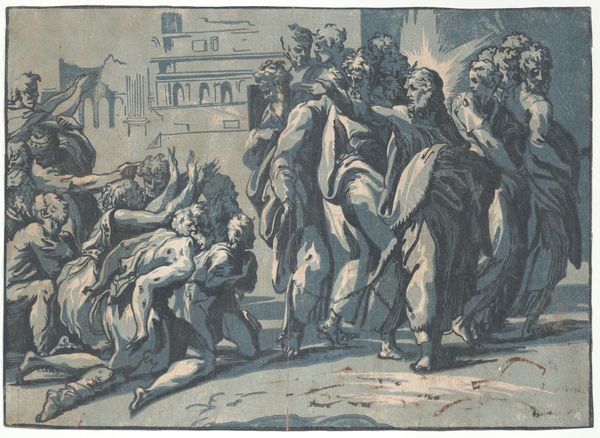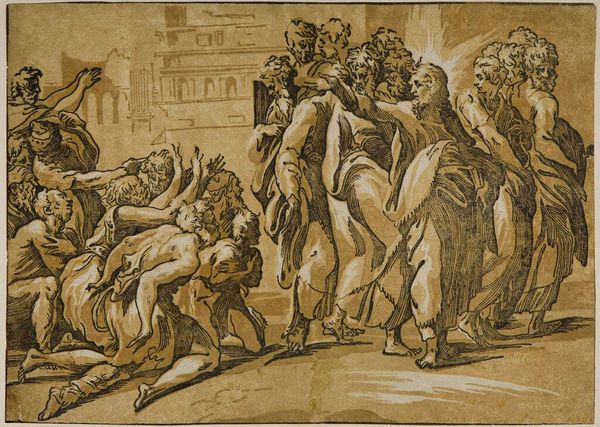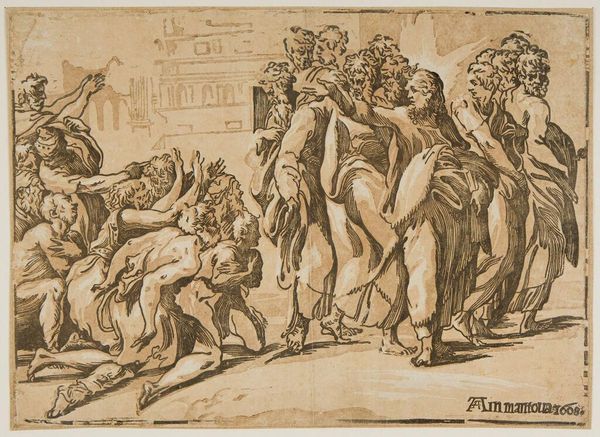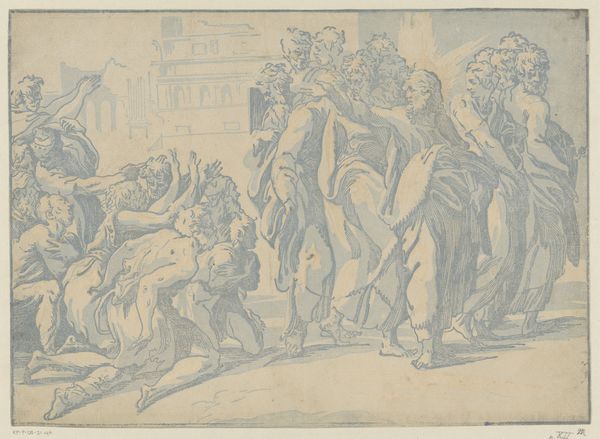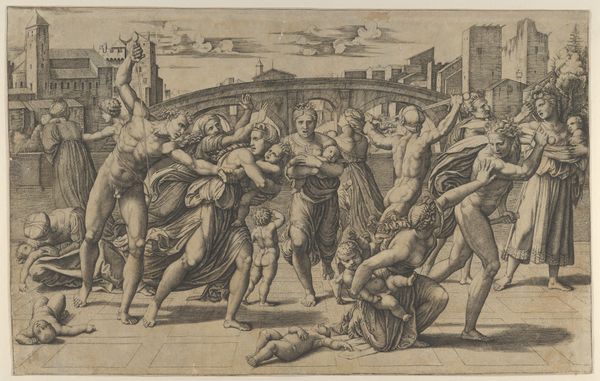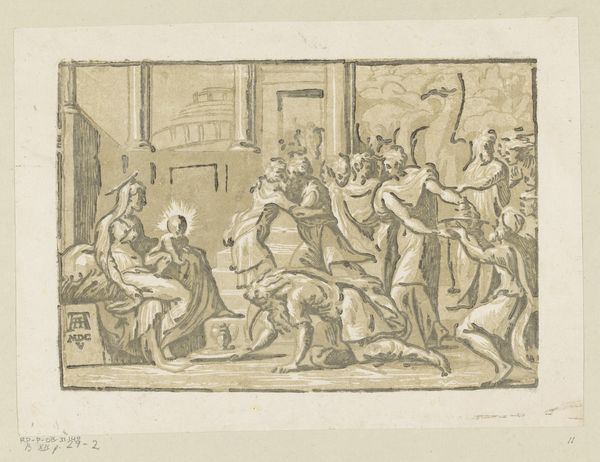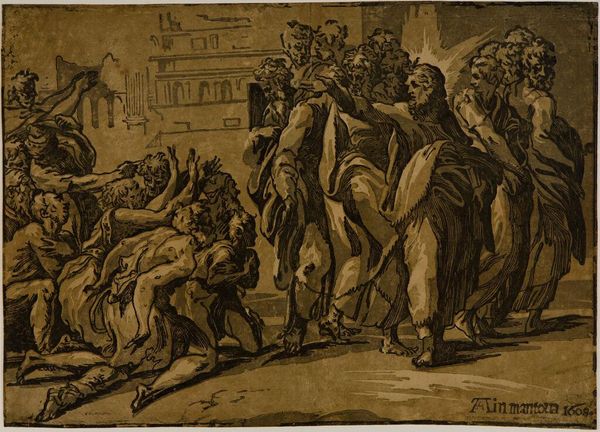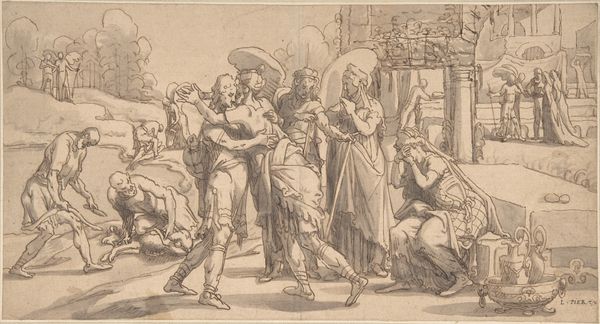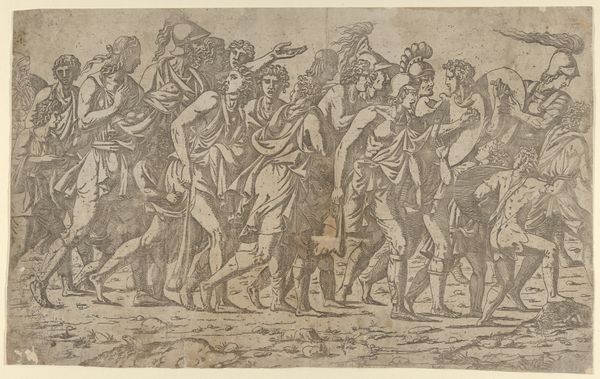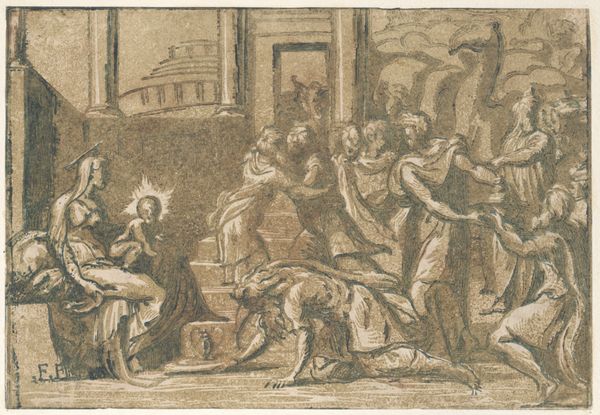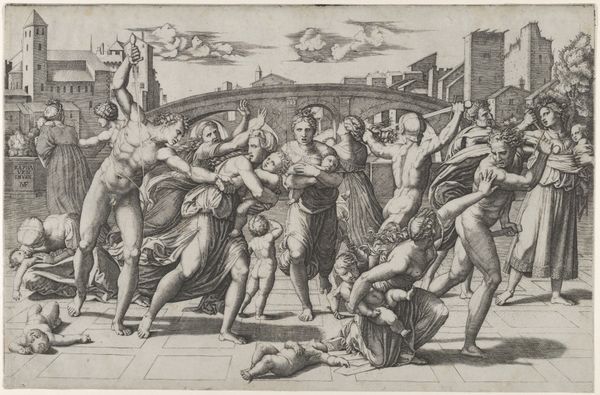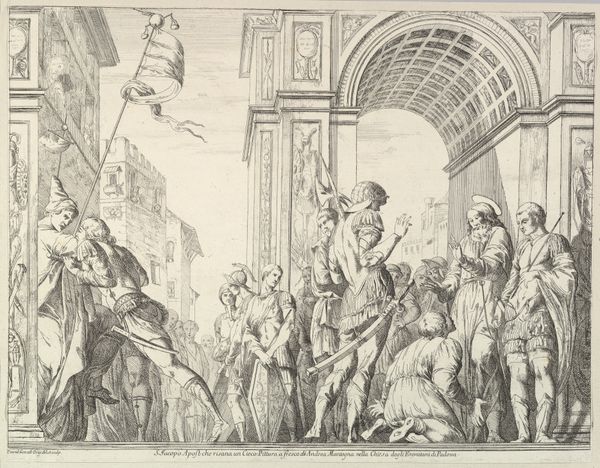
drawing, ink
#
drawing
#
ink drawing
#
figuration
#
11_renaissance
#
ink
#
history-painting
#
italian-renaissance
Dimensions: height 299 mm, width 422 mm
Copyright: Rijks Museum: Open Domain
Curator: This intricate ink drawing from 1608 is titled "Christus geneest melaatsen," depicting Christ healing lepers, attributed to Niccolò Vicentino. It’s a bustling scene rendered with incredible detail. Editor: It’s almost unsettling in its depiction of suffering. The figures of the lepers, contorted and pleading, juxtaposed against the serene composure of Christ... it makes me think about power dynamics and visibility of marginalized groups. Curator: Absolutely. Visually, notice how Vicentino uses dramatic contrasts in light and shadow to emphasize the figures. There's a strong emphasis on the narrative tradition of the period. Leprosy, viewed not just as a physical ailment but a symbol of moral corruption. The act of healing therefore takes on a much more symbolic and transcendent dimension. Editor: I see a direct commentary on social exclusion here. In many ways, the rendering feels timeless. Consider the stigmatization faced by groups considered "unclean" today. Mental health stigma or systemic health inequality… These problems have not disappeared, they have morphed. Art becomes a space for critical consciousness. Curator: It's interesting how you bring up this perspective. I tend to look at the more consistent nature of spiritual and visual traditions here. The halo of light, for instance. Even the almost theatrical grouping of figures has symbolic value that connects back to centuries of representational strategy. I am always moved by this persistent thread through cultural memory. Editor: And I push against the flattening that cultural memory creates. By romanticizing religious and aesthetic conventions, we often ignore the inherent tensions. Whose stories are centered and whose are suppressed? What power is subtly being reproduced? Art forces us to question rather than to accept blindly. Curator: It’s certainly a debate that makes encountering such a complex artwork all the richer. We both ultimately arrive at a similar point through slightly different paths, and perhaps this conversation reflects how Vicentino's work speaks on many levels simultaneously. Editor: Precisely! We come, as different viewers, and can agree upon the complex questions asked by this historical piece regarding morality and social judgement.
Comments
No comments
Be the first to comment and join the conversation on the ultimate creative platform.
